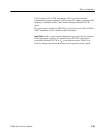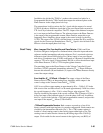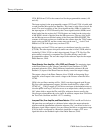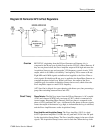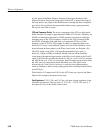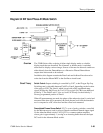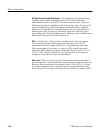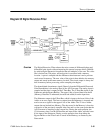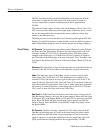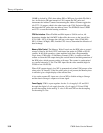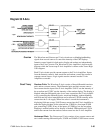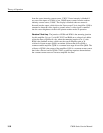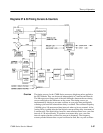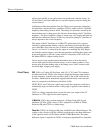
Theory of Operation
1780R-Series Service Manual
3–91
Diagram 35 Digital Recursive Filter
The Digital Recursive Filter reduces the noise content of differential phase and
differential gain signals without impacting the spectral response below 500 kHz
by reinforcing the harmonic frequencies that are multiples of line rate. The video
line is broken into 256 points, and each point is associated with a memory
location. A point is sampled and the difference taken between it and a previous
result stored in memory. The new value of the point is then added to the memory
output and stored in the same memory location. The circuit output is always the
data in memory before processing on the sampled point begins.
The demodulated chrominance signal (Demod) from the Differential Phase and
Gain Demodulator is the analog input of the A/D Converter. The analog input is
sampled and the data is output on the C Data Bus. The C Data Bus inputs to the
Subtracter and the Bypass Buffers. The upper 8 bits of stored data from the M
(Memory) Data Bus is subtracted (inverted and added) from the input data.
The Subtracter output is the S Data Bus, which is input to the lower 8 bits of the
Adder as an error signal. The borrow output from the Subtracter is inverted and
used as an error signal for the upper 4 bits of the Adder. The 12 bits of Adder
output data are latched into Memory. The data stored in the Memory is from the
conversion of the previously-sampled video line and is at the same point that the
A/D Converter is sampling on the current line. During the read operation, the
12-bit memory data is on the M Data Bus and input to the Adder, with the lower
8 bits input to the Subtracter. During a write operation, data from either the
Bypass Buffers or the Filter Latch is stored in the Memory, as dictated by the
Data switch.
Overview



